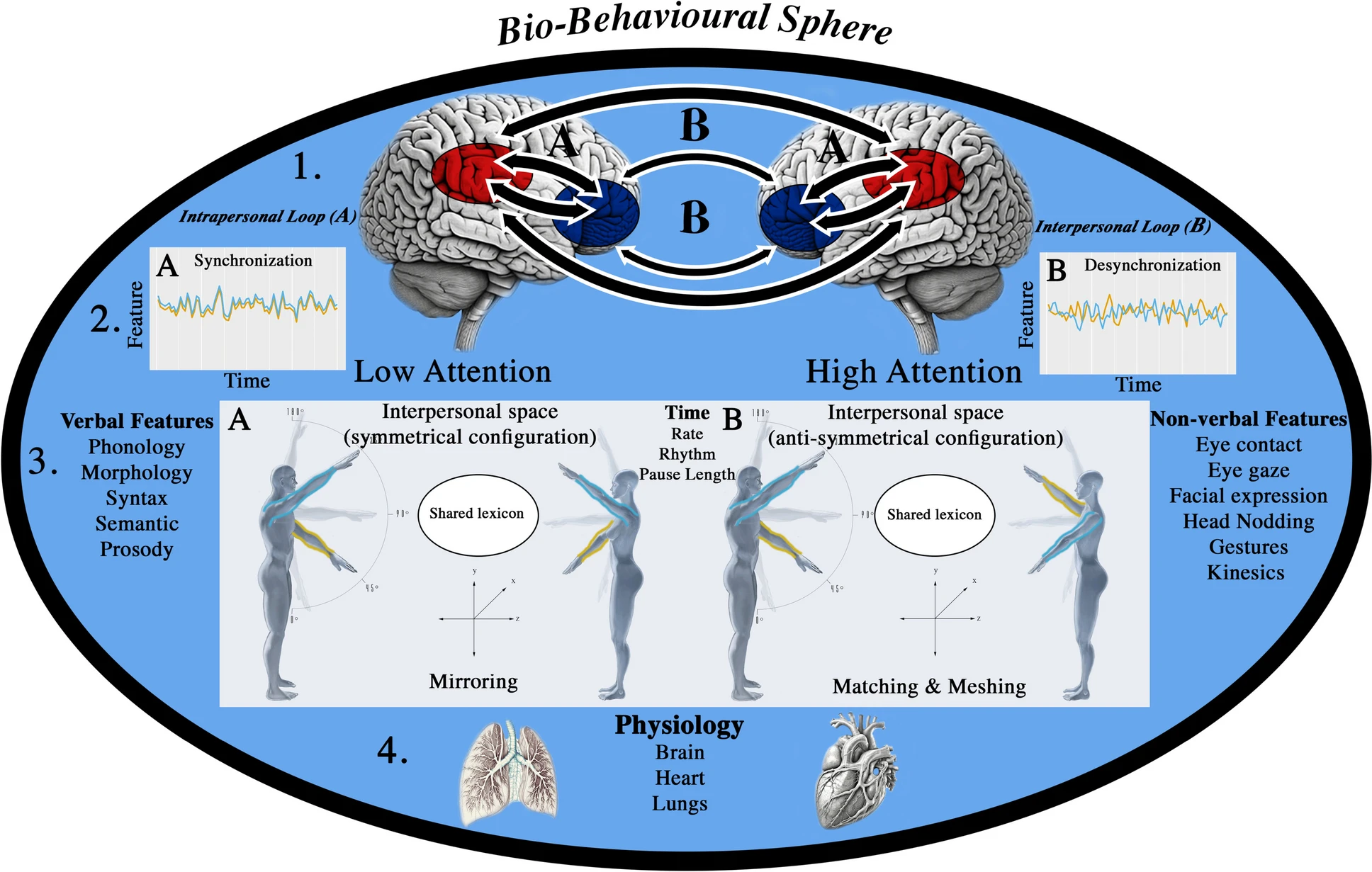Disorganized Communication and Social Dysfunction in Schizophrenia: Emerging Concepts and Methods
Abstract
Purpose of Review: In this review, we embrace the emerging field of second-person neuroscience to address disorganization in schizophrenia. We argue that the focus of interest for disorganization is the interpersonal space where shared mental processes (‘social mind’) occur based on the bio-behavioural synchrony between two (or more) interacting people. We lay out several bio-behavioural measures that can capture the component parts of this process. In particular, we highlight the real-time imaging technology of hyperscanning that enables multi-person analysis of naturalistic social interaction. We illustrate how these measures can be used in empirical studies by posing disorganization as a problem of interpersonal processing.
Recent Findings: Traditionally, disorganized speech and behaviour have been studied as the product of hidden cognitive processes (‘private mind’). A dysfunction in these processes was attributed to the brain afflicted by the illness (‘brain-bound mechanisms’). But this approach has contributed to challenges in measuring and quantifying disorganization. Consequently, the single-brain focus has not provided satisfactory clarity or led to effective treatments for persistent social dysfunction in schizophrenia.
Summary: Social dysfunction is a core feature of schizophrenia. This dysfunction arises from disorganized interpersonal interaction that typifies the social profile of affected individuals. We outline challenges in employing several emerging concepts and methods and how they can be addressed to investigate the mechanisms of social dysfunction in schizophrenia.


Leave a Reply